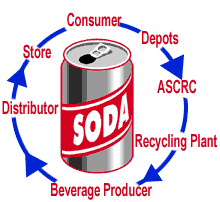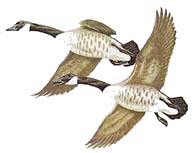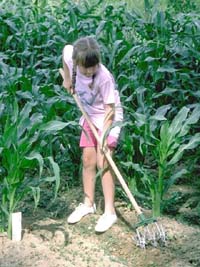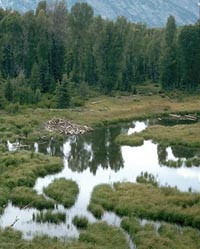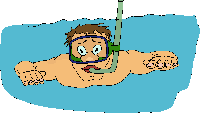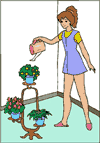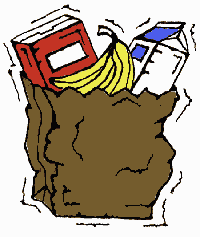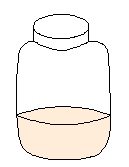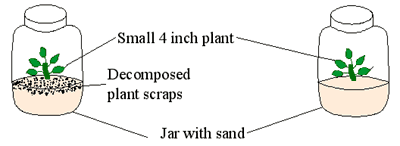 |
Ducks Unlimited Movie
What use is a swamp, marsh, or bog?
It is normal for human beings to often see little value in land that contains a swamp, marsh, or bog. Often when people look at a wetland they see an area that can not be used and profited from. It is not like a nice lake beach that can be used by sunbathers and swimmers alike. Is this reason enough to remove these wetlands?
To many species wetlands are vibrant ecosystem and a place to raise their young and protect their families from predators.
Ducks Unlimited, a national nonprofit conservation organization, has been working to preserve, enhance, and restore many wetlands throughout Canada. Wetlands are valuable ecosystems. In the past, their value has not been understood. They have been drained, filled, and transformed into agricultural land for farmer and industry . When humans are making decisions about economic progress, often the environment is sacrificed to make way for the progress of mankind. Ducks Unlimited is working to create a balance between human and wetland needs.
Watch the accompanying Quicktime Video called "If You Build it..."by clicking the movie projector icon below.
|
Copyright © 2001, the Crown in Right of Alberta, as represented by the Minister of Learning, Alberta Learning, 11160 Jasper Avenue, Edmonton, Alberta T5K 0L2
Picture and Photos:( For specific picture reference view page source.)
Copyright © 2000-2001 www.arttoday.com, Copyright © 2001 Jeannie Charrois, Copyright © The Essentials Clip Art CD, MaGlas-l.gif.
Lesson 2
 
Activity 03 - LESSON 2: Interactions Among Living Things |
|
 |
ACTIVITY A: Symbiotic Relationships
| Now that we understand that each organism interacts with abiotic elements around them, we will look at the type of relationships which can form between species. Symbiosis is a relationship between two different species. Some of these symbiotic relationships provide mutual benefit to both organisms, some may only benefit one, and others may lead to the death of one of the organisms. |
COMMENSALISM
"Hitchhiker" is the best word used to describe a species which benefits from this kind of relationship. In commensal relationships, one species benefits and the other neither benefits nor is harmed. Often the host species provides a home and/or transportation for the other species. |
|
 |
Barnacles hitchhike on the backs of whales, but the whale does not benefit or suffer from this relationship. In the tropics, clownfish can live safely among the stinging thread tentacles of sea anemones. These threads provide protection from predators, yet have no effect on the clownfish. The clownfish feed on the leftover food from the sea anemone, but the sea anemone appears to receive nothing in return. |
| MUTUALISM |
| Flowering plants and bees interact in a mutualistic fashion. The bees fly from plant to plant collecting nectar for food and in the process will also pick up pollen as its body rubs up against the flower. As it moves from flower to flower it transfers the pollen and the plants benefit by being able to reproduce. This is a "garden" example of mutualism . |
 |
 |
Colourful, crusty lichen grows on rocks in the Arctic Tundra of Canada. What is lichen, a plant or a fungus? Both! Lichen is formed by the union of a fungus and an algae. The fungus give the algae a place to live, as well as water and nutrients. The algae provides food to the fungus through the process of photosynthesis. They survive because of this mutual relationship. Without it, they would never make it on their own. |
| PARASITISM |
| "You say you saw a white moose in Elk Island National Park?"
"Moose are not white!"
"They can be if they scratch away all their protective outer hair."
In the spring, if the temperature is warmer and drier than usual, an explosion of blood sucking ticks can form. If these parasitic ticks decide to make a moose their host, the moose will be irritated by the itching and attempt to scratch at the problem by rubbing up against trees. This causes the protective coating of black hair to be removed. If spring temperatures drop, moose can then die from hypothermia.
|
 |
| Parasitism is the darker side of symbiosis. In these relationships, the parasite benefits, while the host is harmed. In most cases the parasite is not out to kill its host, because if the host dies, so does the food source for the parasite, which will ultimately bring about its own death. Parasitism will often make the host sick or uncomfortable. These factors may lead to death indirectly. |
|
|
Textbook Readings
Science in Action 7
pages 16 to 17
or
Science Focus 7
pages 14 to 16
|
|
|
|
|
|
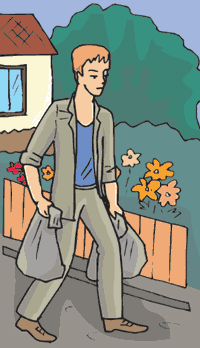 |
ACTIVITY B: Niche, Competition, and Adaptation
| A niche is the term used to describe the roles or functions an organism plays in a community. Every type of organism has its own niche. No two species have the same identical role in a community. |
| Imagine what might happen in your home if you did not play your roles. Let's say, it is your job to take out the garbage and buy all the groceries. If you stopped doing your job, what would happen? I know you think your mother or your brother would just do it for you, but what if they did not know how to perform these jobs? The garbage would pile up and the food would run out. Members of your family would be greatly impacted by the jobs you are not doing. This would lead to one of three things occurring within your home: |
|
- Your family may adapt and fill the niche you vacated.
- Your family may adapts and then exclude you from the family.
- Your family may suffer due to a lack of food or sickness cause by rotting garbage.
The above example may seem harsh, but this is what happens in natural communities. Each species plays a particular part in the ecosystem it shares with other organisms. Some species are producers, while others are consumers or decomposers. The ecological niche includes both the animal's or plant's physical habitat and how it is adapted to life in that habitat. In examining its adaptive strategy, ecologists consider how the plant or animal obtains its energy in order to live. Each organism has many adaptations to its habitat. The first adaptation concerns where in the habitat the animal or plant has chosen to live. |
| COMPETITION FOR A NICHE |
| Competition plays a large role in the ecosystem. Every plant and animal competes with other organisms to survive. If two species attempt to occupy the same niche in a community, competition will lead to one of three possible outcomes: extinction, exclusion, or character displacement adaptation.
Extinction of a species from a certain habitat is likely when two species want to fill the same niche in the community. This happens every year when you put in your garden. Prior to any of your plant sprouting, weeds are well on their way.
|
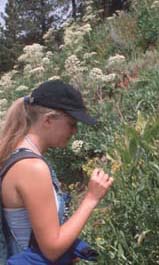 |
| If they are left untouched, weeds will tend to grow faster and bigger than the other plants in the garden, crowding out, blocking sunlight, and taking valuable water and nutrients from the soil. Vegetables in this garden have to compete at a disadvantage and often do not produce plentiful crops or become extinct from this habitat. This is why your mother always sends you out to the garden to pick the weeds. |
 |
The coyote and the red fox have similar roles in their habitat, but when the two attempt to live in the same community, competition leads to exculsion. In Alberta, the coyote lives in the grasslands, and the red fox inhabits the forest edge and meadow areas. When humans cut more into the forested areas to create farmland, the red fox looses more of its habitat to the coyote. In some places, the coyote has pushed the red fox out of its part of the habitat. |
| Character displacement adaptation is the final possibility when organisms compete for the same niche. When two species compete for the same niche, they develop differently than they would if they did not co-exist. There is an island ecological reserve for birds off the coast of Newfoundland. This reserve is made up of small islands which find themselves to be the home of numerous species of birds. For these birds to co-exist they can not be in constant competition for nesting areas and food. For two species to exist in this habitat one of the species and perhaps both may need to modify their niche. For example, if both birds are accustomed to making their homes in the cliff of the rock, one will have to adapt and make their nests on the grassy shoreline, or burrow into the brush. |
 |
|
|
|
Textbook Readings
Science in Action 7
page 19
or
Science Focus 7
pages 10 to 11 and 40 to 41
|
|
|
|
|
|
 |
ACTIVITY C: Adaptation Investigation
| Look at all the birds on the left. What do you think they eat? Fish, insects, mice, could be some of their favourite meals. Their beaks might give you a clue about their diet as their beaks are crucial in helping the bird catch and eats its prey. |
| Now, what if a bird's normal diet was in short supply and they had to look for other sources of food? Would they be able to adapt to different food sources? Would they survive? Well this is what we are going to investigate today in your home lab.
QUESTION
Can birds switch to a different types of food if their regular food is in short supply?
HYPOTHESIS
Form a hypothesis about whether birds will be able to survive if their usual food supply is restricted. Remember; your hypothesis should state your answer to the question as well as your reasons for that answer.
MATERIALS REQUIRED
toothpick
kitchen tongs
clothespin
teaspoon
cup
clock or watch
pencil or pen
paper
raisins-10 pieces
rice- 10 grains
cereal such as Cheerios, fruit loops, or puffed wheat-10 pieces
elastic bands- 10 pieces
macaroni, uncooked-10 pieces
|
|
PROCEDURE
You may choose to substitute an apparatus or food item if you are missing any of the items on the materials list. Make sure to note the change in your observations. 1. On a table, lay out the rice, cereal, elastic bands, raisins, and macaroni in small scattered piles of 10. You should have 5 piles one for each of the food items which the birds like to eat.
2. Starting with the toothpick you will try to pick up as many raisins using only the toothpick in 30 seconds. As you pick up the raisins, one at a time, they must be deposited into the cup. The cup represents the stomach of the bird.
3. Once the first 30 seconds has elapsed, move to the second pile of food, the rice, and see how many of these items you can pick up one at a time with the toothpick and deposit in the cup. Once again you only have 30 seconds for each food pile.
4. Continue the steps above for the remaining 3 food sources.
5. Once you have attempted all 5 food piles with the toothpick, count each of the food items placed in the cup and record the number into your observations data chart in your word processing document.
6. Repeat the steps above for the remaining beaks-kitchen tongs, clothespin, and spoon. |
|
|
|
|
|
 Exercise 1.2: Adaptation Investigation Exercise 1.2: Adaptation Investigation

|
|
|
|










